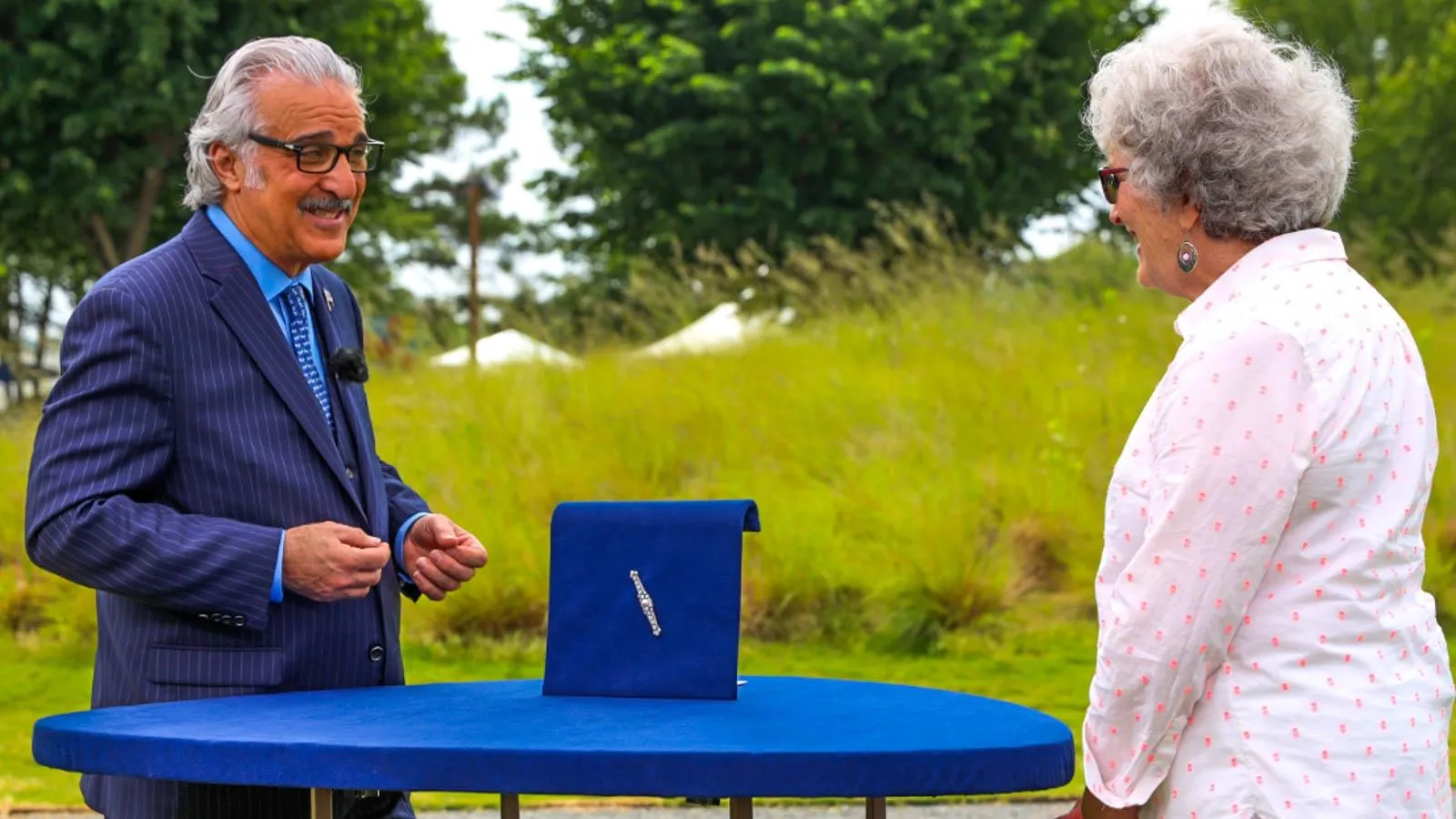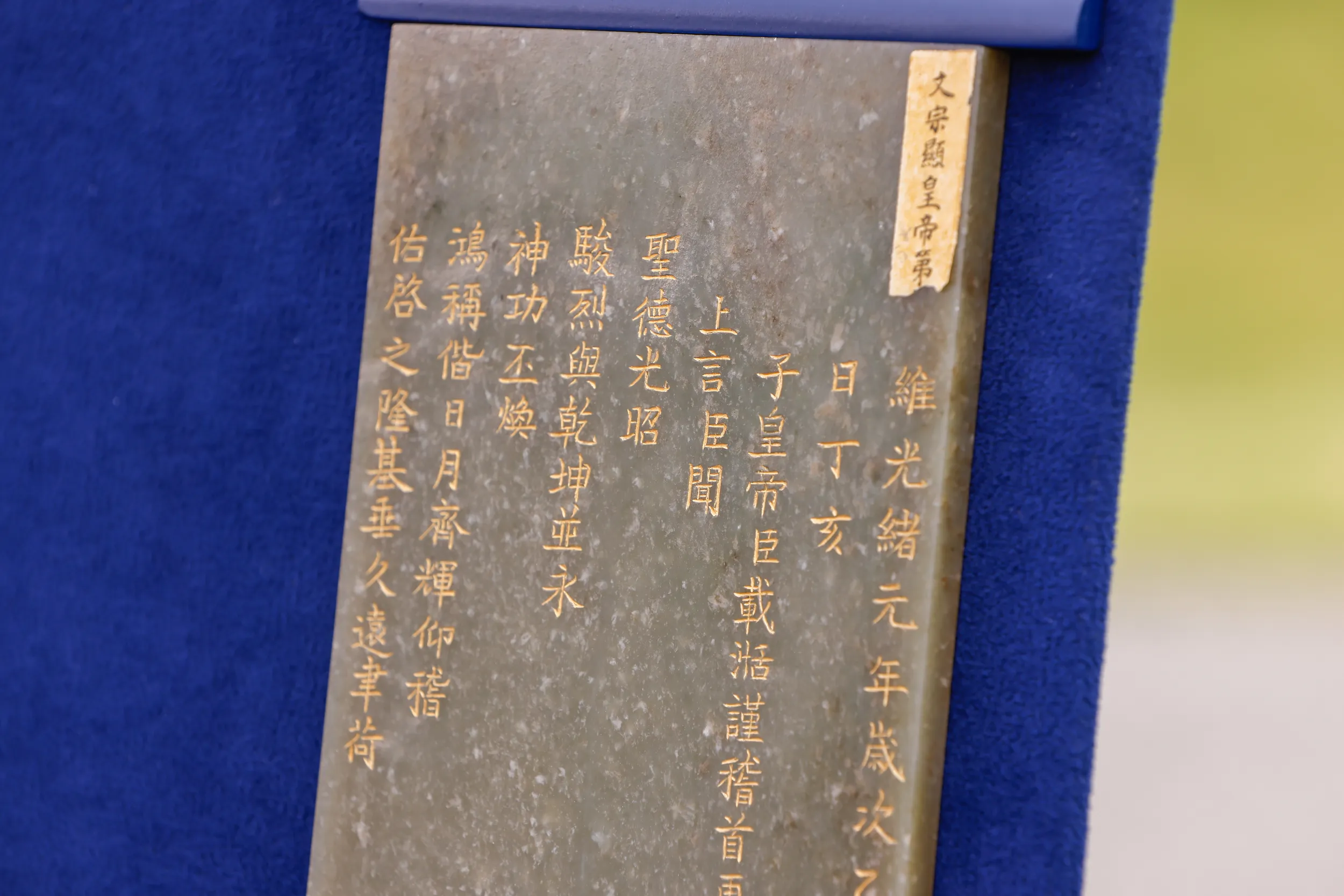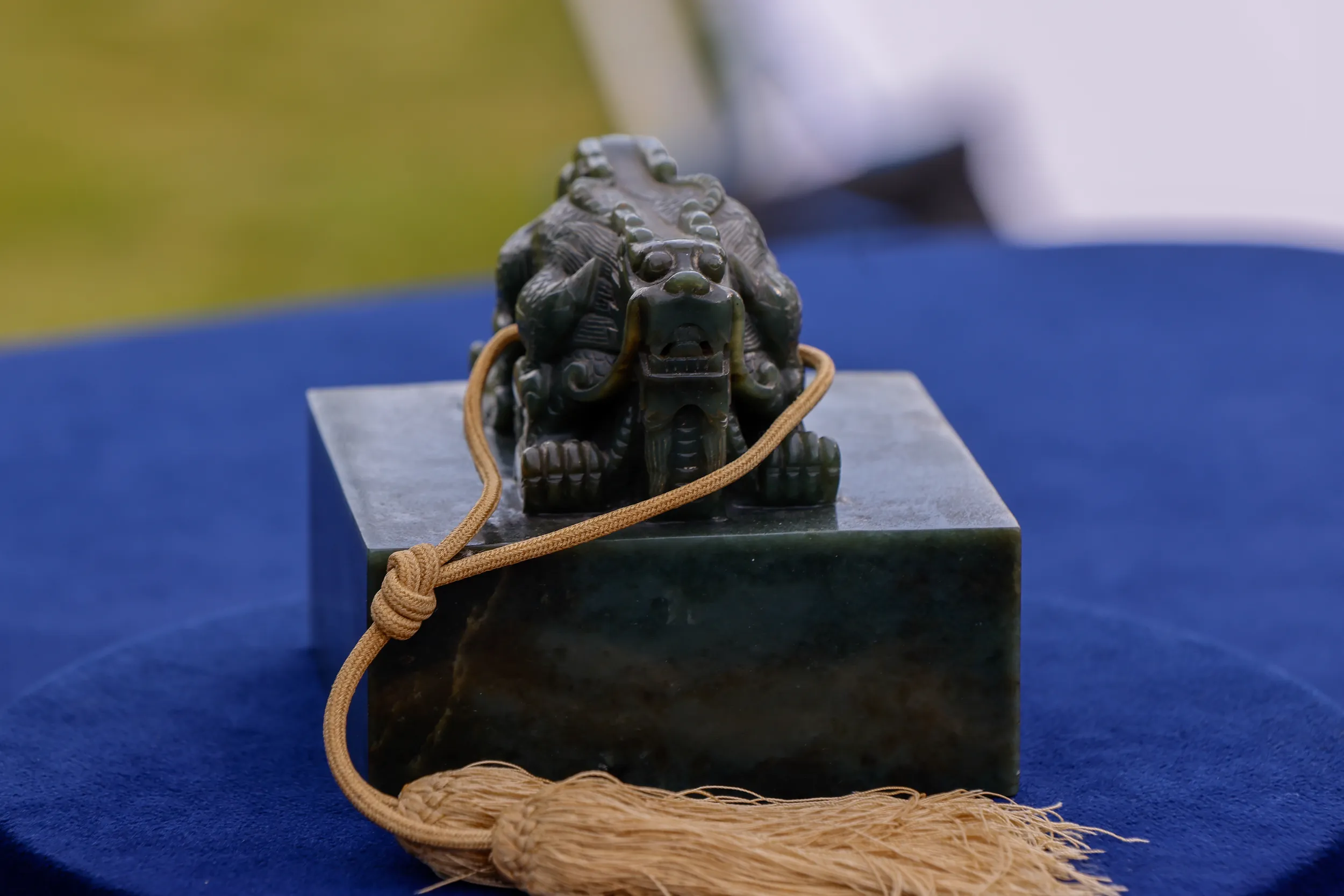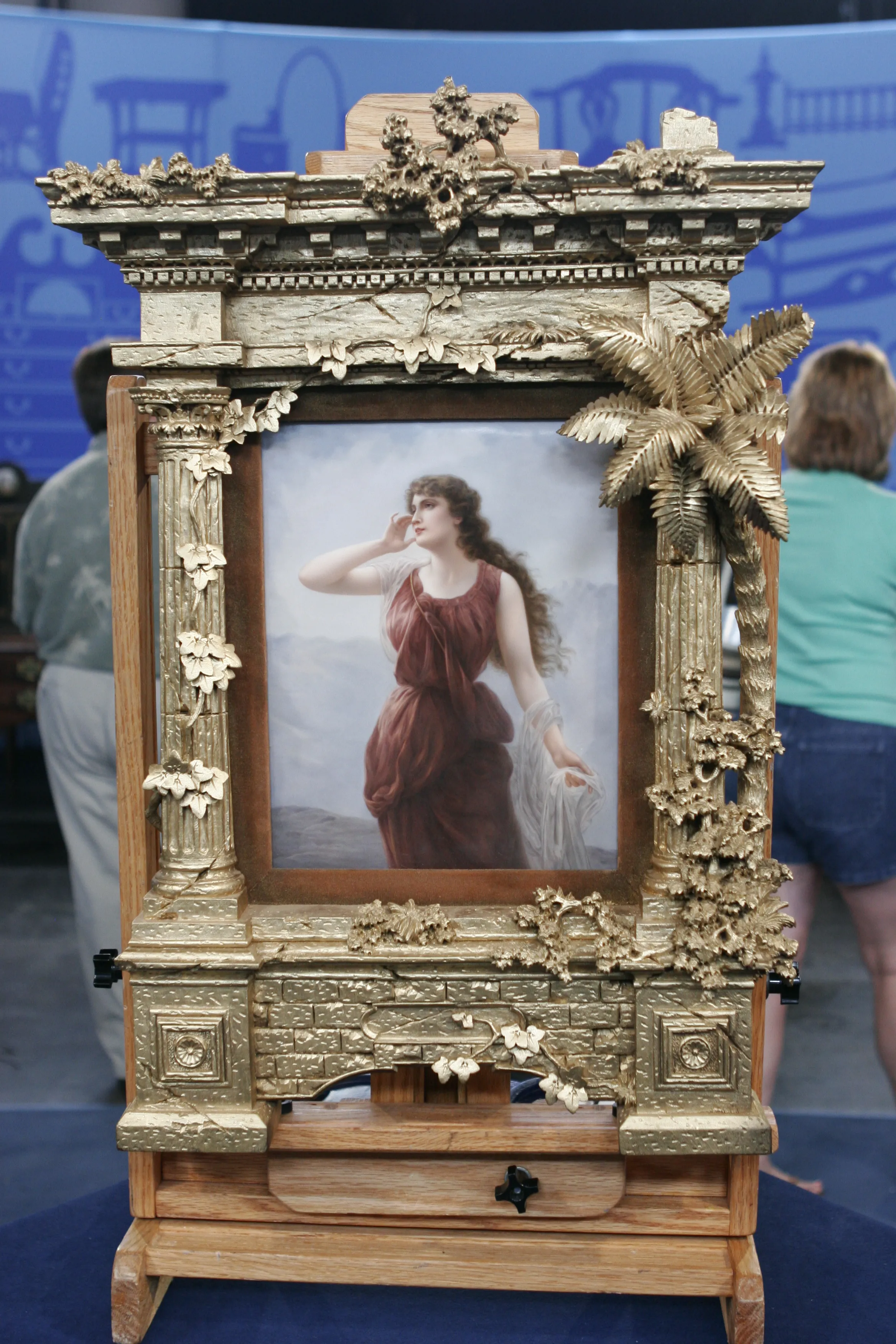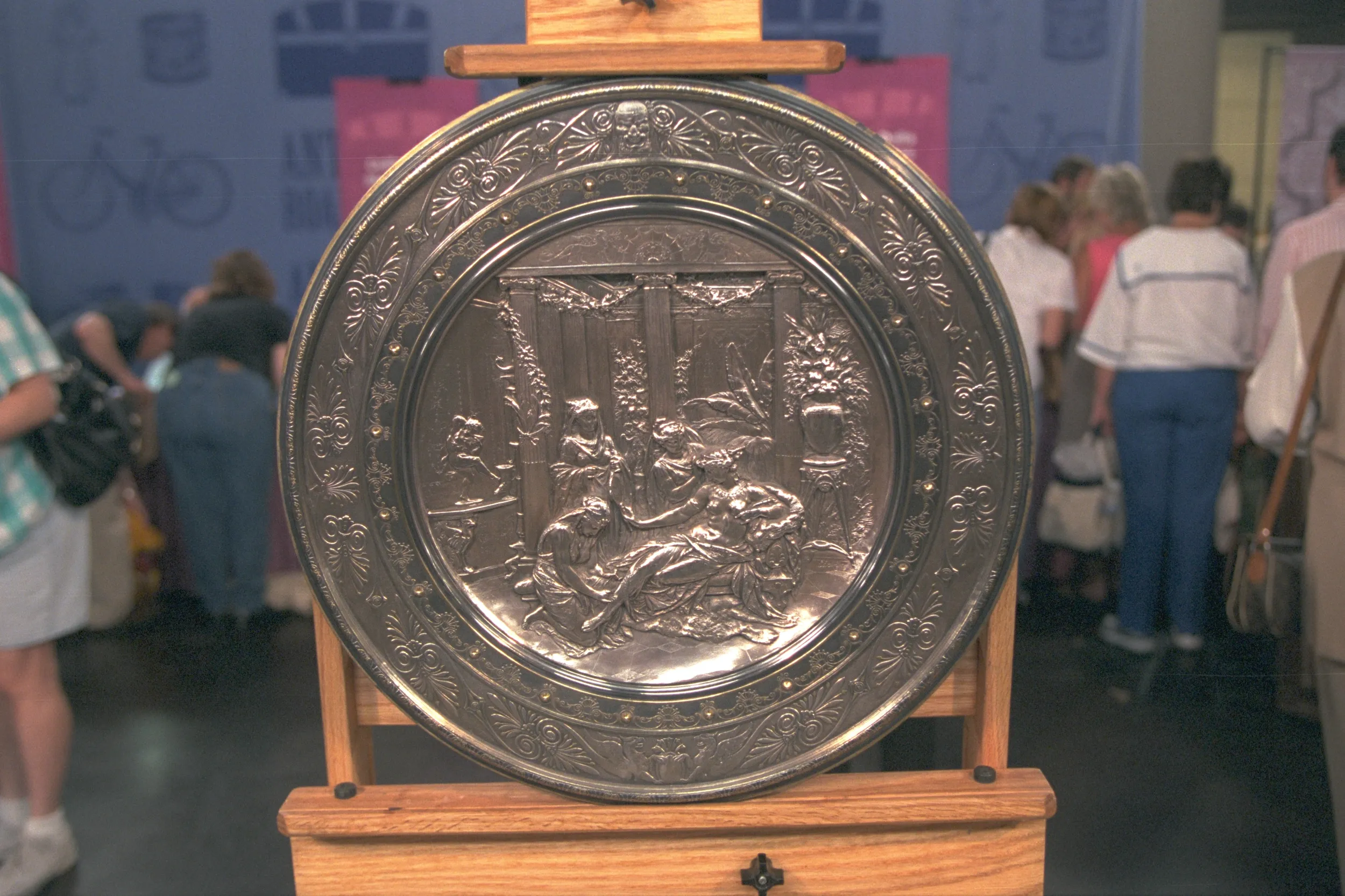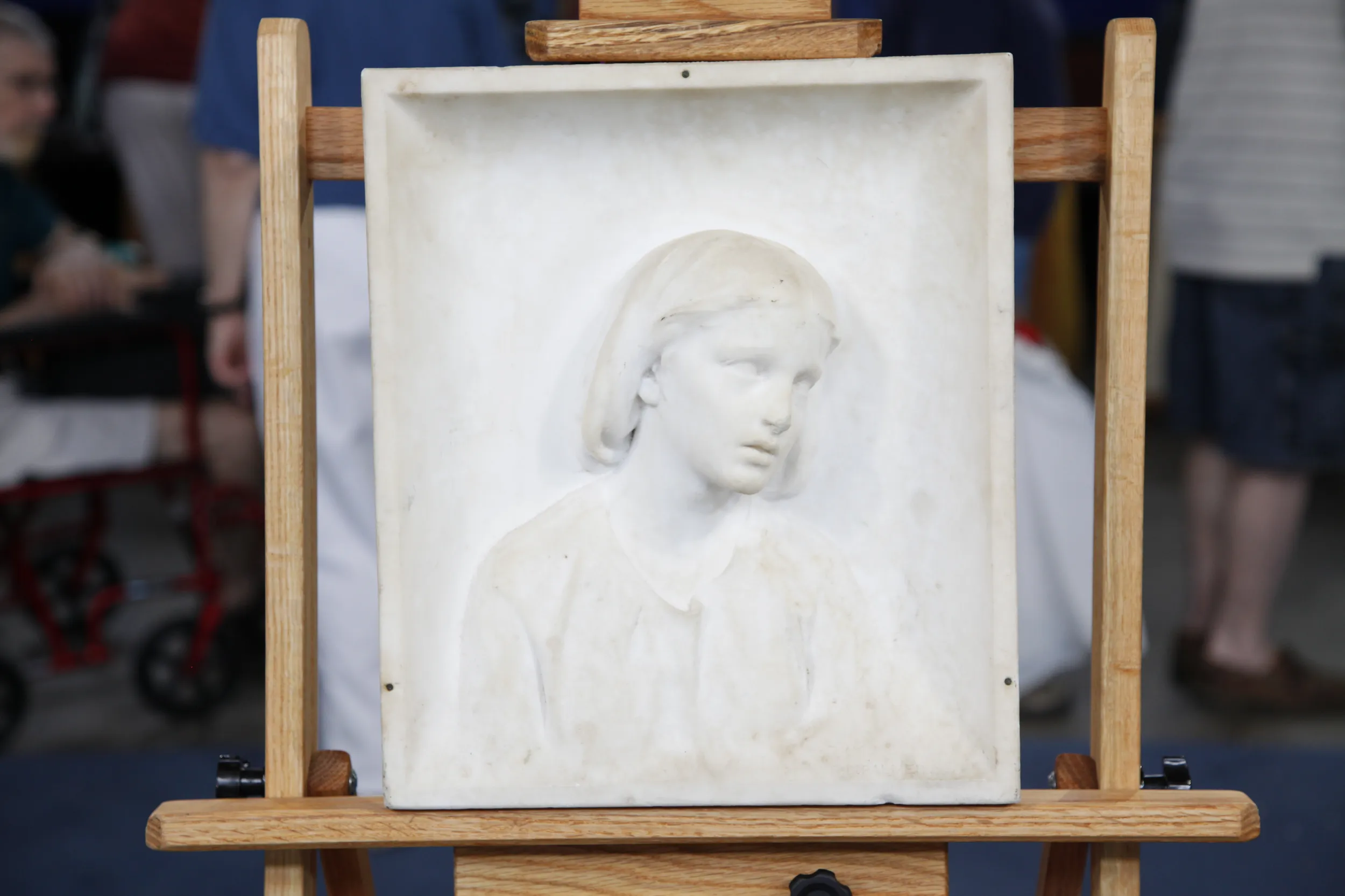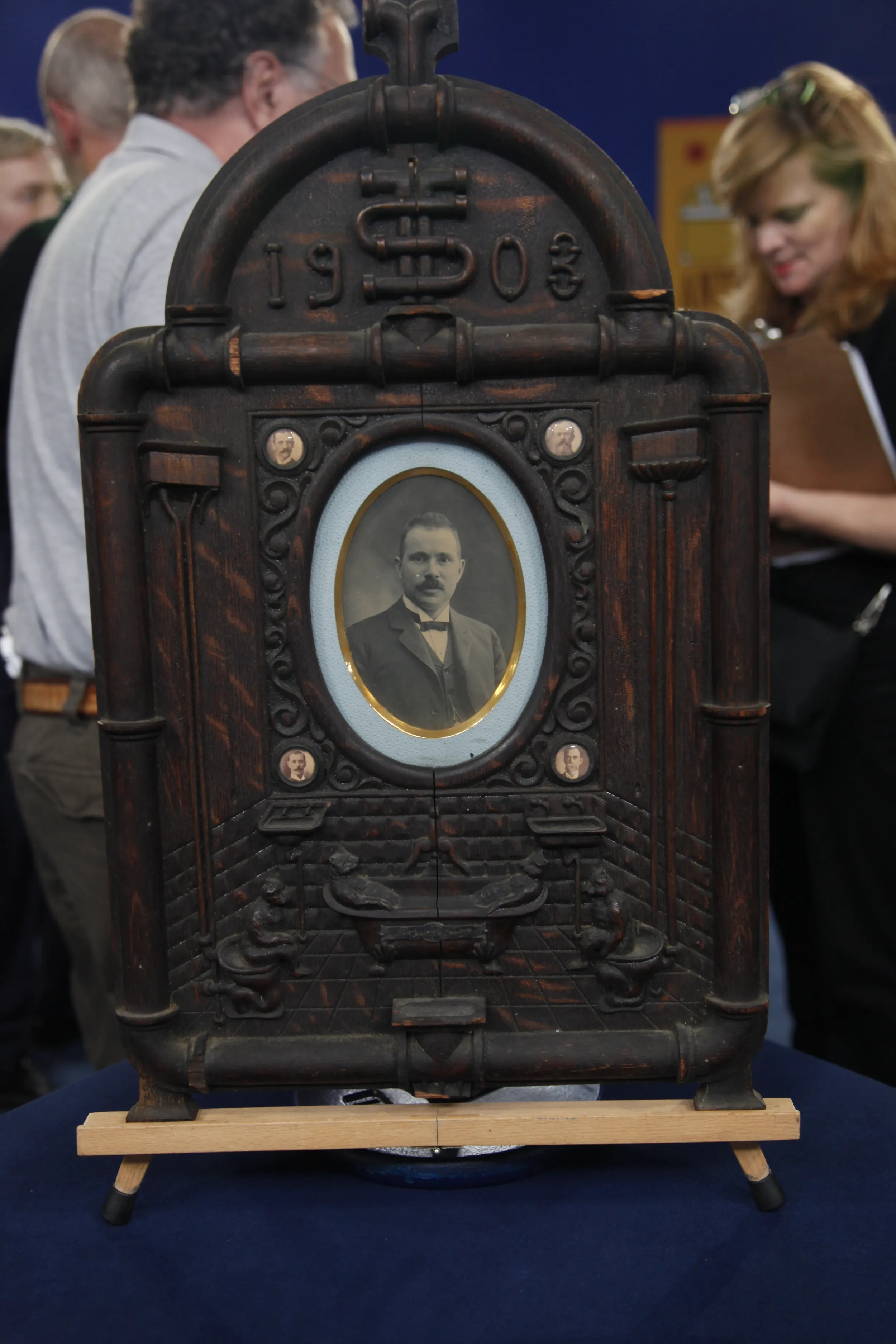GUEST: I brought two jade tablets and a jade seal that belonged to my great great grandmother in California. She died in 1929, and at that point, my mother inherited them. I have been told they are 18th century from China.
APPRAISER: Mm.
GUEST: According to my mother, she may have purchased them in San Francisco, where she lived.
APPRAISER: They're mottled green jade. They're plaques or tablets. It's likely that the two on the screen behind the seal, were in fact, out of an album. So it may have been a jade-paged book. And they're incised with official script. And the seal, again, is green jade, surmounted with a double dragon and a, a cord. The seals are symbol of imperial authority. Most imperial seals that are done in this square form are surmounted with this double dragon. It's a very common motif on imperial seals or court seals.
GUEST: Ah.
APPRAISER: And the piece of jade is lovely. It's mottled. It's green jade. It's consistent with what would be used in the court. At the table, we– we had a long discussion about these objects.
GUEST: Yes.
APPRAISER: And, firstly, we thought the plaques too were from the 18th century, but it's actually dated here… Guangxu, first year of Guangxu, which is 1875.
GUEST: Oh...
APPRAISER: And these are more than likely commemorative pages. There was an honorary mention of a previous ancestor. These jade book pages are not uncommon. They're more than likely two of a book of 12. Do you have any i-idea of value on the plaques?
GUEST: My mother had them appraised in 2007 for $1,400.
APPRAISER: And so let's move to the seal that's in front of us. There's a few characteristics that would indicate to us that it's likely not 18th century. There's a, a weakness of carving through the side here where you have these celestial clouds.
GUEST: Mm-hmm.
APPRAISER: If we look at examples of 18th century models, there's just-- everything is highlighted. There's a deeper lapidary carving to all aspects of the seal. It was indicative of the, the time frame, best materials, best lapidaries, best workshop, time most spent. And as dynastic China went into decline, so did its decorative arts. You'll see on the underside, it has two columns of script. One's a seal script and the other is a compressed script. But you'll see here in the carving of the impression that there are some mis-carvings to this side where the lines continued into the border.
GUEST: Yes.
APPRAISER: So there are a little weakness in the carving that leads us down the path of, of not being 18th century.
GUEST: Okay.
APPRAISER: Its association with something dated 1875 would indicate it's possible that it is a late 19th century imperial jade seal rather than 18th century seal. We need to spend more time with it, we need to do, do more research. These things are, are problematic at the very best of times. If the jade book leaves came up at auction, I think the shared consensus is that they are imperial, or certainly very likely to be imperial. Together, as an associated pair, they would carry an auction estimate of $20,000 to $30,000.
GUEST: (laughs) Okay. Wow.
APPRAISER: Do you have any i-idea of value on the seal?
GUEST: Again, my mother had it appraised at the same time, uh, in 2007...
APPRAISER: Mm-hmm.
GUEST: ...and the seal appraised for $1,400 also.
APPRAISER: Conservatively, at auction, it would carry an auction estimate of $30,000 to $50,000.
GUEST: (stammering) Uh... um, okay. All right.
APPRAISER: Um, and I think our takeaway was if there can be a shared consensus within the industry among peers, that it is 1875 to the, the end of Guangxu reign, that it may be a multiple of ten. So it may carry an a-auction estimate of $300,000 to $500,000.
GUEST: Oh, is-is that all? O-Okay. Um, well, that's a little bit different than what I was expecting today, but… Oh, my. Oh, my. Thank you. That's amazing. Wow.

